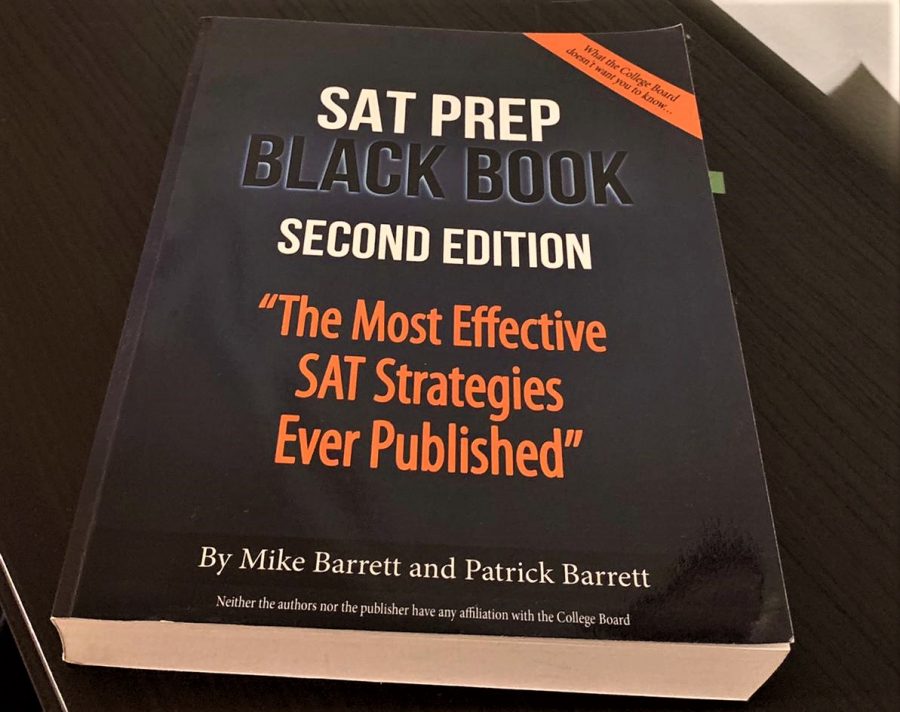Students and staff reflect on the SAT
October 30, 2021
Every fall and every spring, thousands of students prepare to take a test that they are told will impact their future: the SAT. This test has been a tradition in high schools for decades, with the first students taking the SAT in 1926. But as more people start to express their opinions on the SAT, a common question starts to arise: are the SATs a proper measurement of a student’s abilities?
Some students and teachers think that the SAT is not a fair assessment of what students are capable of achieving: “I just don’t think that it really gives a comprehensive picture of a student’s ability with reading and writing and math,” says english teacher Hannah Broich.
There are high schoolers who are brilliant students and have excelled in all of their classes, but they might not do well on standardized tests. Taking an exam like the SAT is an extremely stressful experience, and this can cause students to freeze up and not do as well as they might be capable of doing.
“I don’t think three hours on a Saturday [should] determine all four years of high school,” says senior Jessie Davidson.
The SAT also doesn’t take into account outside influences that could hinder a person’s score, including stress. Perhaps a student is ill the day of the test, or they just had an argument with their parents.
“We’re human beings, and we’re impacted by our environment. That’s a part of the examination too,” says Broich. As a result, colleges see not what you have the potential to do, but how well you tested on that one day.
SAT scores might not even be the best representation of intelligence and integrity during high school. As the college counselor at Township, Elizabeth Ziegler, points out, “The biggest predictor of success at the college level is high school GPA.” GPA, or Grade Point Average, indicates how well someone did in their courses overall. So much pressure is put on students to perform well, when the SAT might not even be the best indicator of a student’s intellect.
There is also the concern that the SAT is not an equal opportunity for everyone. Students with more economic resources can take expensive prep courses (hundreds or sometimes even up to a thousand dollars) and go through programs to prepare them for the test, while others may not have this ability. Some students are automatically at a disadvantage because of their lack of resources.
As Davidson explains, the SAT is not only a measure of the content but also of your test-taking approach. “When you’re taking SAT classes, they’re teaching you how to answer problems—it’s all about strategy. So if you don’t understand the strategy then you’re definitely at a disadvantage,” she says.
However, for more competitive colleges, an excellent SAT score “could potentially set you apart from other students who have many of the same academic records and volunteer opportunities,” says math teacher Rebecca Maryott. In some cases, taking the SAT is encouraged. It really just depends on the student and the type of school they’re applying to.
As for the questions themselves, they are developed to be a fair and accurate interpretation of what students have learned.
“The SAT presents questions based on the information that you should reasonably have, based on classes you have taken in high school,” Ziegler explains. So it’s not the questions themselves that are an inaccurate representation of students’ abilities, but more the fact that one whole test is determining their future. It is important to note, however, that not every student receives the same education, so even the questions that are designed to be fair can sometimes turn out not to be.
“I think it’s the right idea, but in all kinds of ways it’s the wrong execution,” says senior Luke Welch.
However, more and more colleges are beginning to recognize the concerns with the SAT. This year, about 75% of colleges are test-optional, which means that students can choose whether or not to submit their score.
For students who are planning on taking the SAT, upperclassmen and faculty suggest using Khan Academy and taking the PSAT to prepare. The PSAT, which accurately represents the format and style of the actual test, can help students feel more confident for the SAT. Khan Academy, which has a partnership with College Board, also offers free study plans and practice problems.
For the math section, Maryott suggests looking over material from previous classes, because “some things we don’t revisit every year in your regular classes, but they do reach topics over the past few years of study.”
For those wondering how many times they should be taking the SAT, it seems that the number is a very individual decision.
Senior Luke Welch suggests taking the SAT again after you have become familiar with it the first time. “No matter how many practice tests you take, no matter how many PSATs you take, you’re really not 100% prepared for the very first SAT,” Welch says.
While most interviewed for this article suggest taking the SAT more than once, Ziegler warns against taking it too many times.
While students can certainly take the SAT more than twice, “[they] usually do not see a huge jump in their score from the second to third attempt, unless they have done some significant preparation,” Ziegler says.
Keeping these experiences and advice in mind, taking the SAT is a personal choice and there are positives and negatives to both sides of the test. Whether or not more colleges will continue to make the SAT optional is yet to be determined, but the SAT remains a controversial aspect of a student’s high school career.













